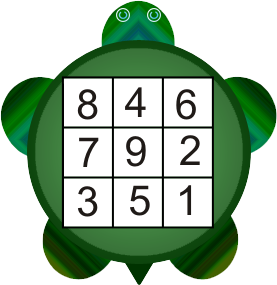
Picture taken by Dr C Alyilmaz in Mongolia (Bugut Inscription)
Hindu Gods are associated with all the important birds and animals. They are associated with insects and reptiles as well. Take any animal whether it is elephant or rhino, snake or scorpion, fish or crocodile, eagle or crow, boar or tortoise ---they are all associated with Hindu gods. We see it in the Vedas, in the Indus valley civilization and in the temple Vahanas. But when we read that even the Chinese, Mongolians and other cultures believed in such things we raise our brows. When we see Sanskrit inscription on a tortoise statue,that too in the remotest part of the world, we are wonder struck!!
Kurmavatar, the Tortoise incarnation of Vishnu is the oldest tortoise we know. But we have even Rishis (seers) in the name of frogm(manduka)owl (Uluka) and tortoise (Kasyapa)in Vedic literature. Kasyapa is one of the Vedic Rishis. Kasyapa means tortoise. Kashmir is named after Kasyapa Rishi. Kumaon hills in the Himalayas is named after Kurma Avatar. If you read the history of Kashmir and Kumaon in Uttaranchal state you will find more surprising things. We have Kurmavatar statues in Kahajuraho Lakshman temple (M.P) and Osiyan temple in Rajasthan. One exclusive temple for Kurmavatar is near Srikakulam in Andhra Pradesh .

Three thousand years ago a Chinese king found a turtle with a magic square on its back. The magic square will add up to number fifteen whichever way you add the numbers. From that day it was considered a lucky square and people believe that they will get money etc. It is called Lo Shu. Hindus also believe this as money making square and call it Kubera Kolam. Egyptians and Hindus used the magic squares. Even the Vedic mathematics has magic squares.
Tortoise statues with stone tablet son their backs is a common sight in South East Asian and the Far Eastern countries. Nowadays they are used in mausoleums as memorial stones. But in olden days they were used as inscription tablets. The oldest Tortoise tablet has a Sanskrit inscription on its back along with other languages. It is dated around 500 AD. It is a wonder that this Sanskrit inscription was found in the remotest part of the world. Mongolia is a land locked country and even during the modern era the country is difficult to access. This country was known to the only because of its ruler ruthless Genghis Khan( 1162-1227 AD).
The tortoise tablet with Sanskrit inscription is known as Bugut inscription. It is an old Turkic inscription. It is found in Bugut mountain in Mongolia. The tablet on the back of the tortoise has Sogdian letters on three sides and Sanskrit letters on the fourth side. It is in Brahmi characters. The text contains an order to build a monument for king Mahan Tigin. But the inscription did not stop there. It throws lot of light on the Turkic beliefs, values and relations with others. It was dated 572 -580 AD. It is two and a half meter tall and it is preserved in Cecerleg Museum in Mongolia.
Sanskrit inscriptions are available throughout Asia from the remotest Mongolian mountains to tropical forests of Borneo. We see thousands of inscriptions in high literary style from 150 AD. Thousands of them were written in verses. This strengthens the belief that they were writing Sanskrit even earlier but on palm leaves and birch leaves. Another fact is that it was understood by everyone from Mongolia to Indonesia.
The Bugut inscription has beliefs similar to India. It considers the king as a representative of God on earth. Kings are called savers of the world. Kings lay their faith in God and thank him for everything. This is typical Indian.
BIXI
Picture: Kurmavatar in Bangkok (Thailand ) airport
In South East Asia and China they call these tortoise stone tablets Bixi. The Chinese word means strong or capable of withstanding any weight. It is similar to Kurmavatar tortoise. When Devas and Asuras churned the ocean to get Amrita (ambrosia) they used Mandara Mountain as the churning rod and the snake Vasuki as rope. But the mountain was not stable and started going to the bottom of the sea. Then Vishnu incarnated himself as a tortoise and held the mountain stable. So the idea of tortoise as a strong stabilising or fixing factor went from India to different parts of the world. We can safely conclude that Kurmavatar (Tortoise Incarnation of Vishnu) is the basis for all tortoise stories in the world. The idea migrated to China and South East Asia through the Buddhist monks.
Please read my posts: 1. Old Sanskrit Inscriptions in Mosques and on Coins 2. Ancient Sanskrit Inscriptions in Strange Places 3. The Tortoise Mystery: Can we live for 300 years? (contact [email protected])
